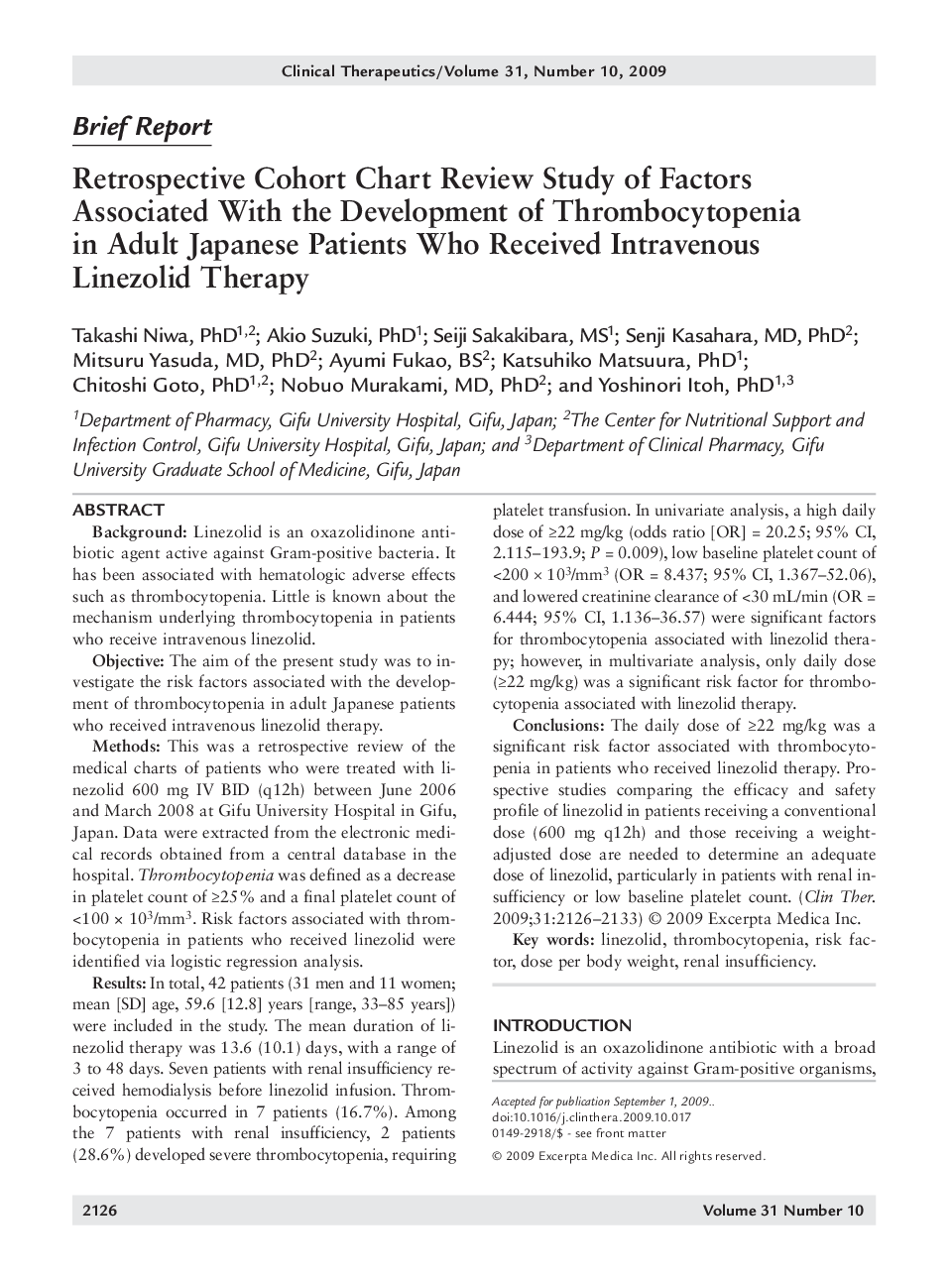| کد مقاله | کد نشریه | سال انتشار | مقاله انگلیسی | نسخه تمام متن |
|---|---|---|---|---|
| 2528294 | 1119963 | 2009 | 8 صفحه PDF | دانلود رایگان |

Background: Linezolid is an oxazolidinone antibiotic agent active against Gram-positive bacteria. It has been associated with hematologic adverse effects such as thrombocytopenia. Little is known about the mechanism underlying thrombocytopenia in patients who receive intravenous linezolid.Objective: The aim of the present study was to investigate the risk factors associated with the development of thrombocytopenia in adult Japanese patients who received intravenous linezolid therapy.Methods: This was a retrospective review of the medical charts of patients who were treated with linezolid 600 mg IV BID (q12h) between June 2006 and March 2008 at Gifu University Hospital in Gifu, Japan. Data were extracted from the electronic medical records obtained from a central database in the hospital. Thrombocytopenia was defined as a decrease in platelet count of ≥25% and a final platelet count of <100 × 103/mm3. Risk factors associated with thrombocytopenia in patients who received linezolid were identified via logistic regression analysis.Results: In total, 42 patients (31 men and 11 women; mean [SD] age, 59.6 [12.8] years [range, 33–85 years]) were included in the study. The mean duration of linezolid therapy was 13.6 (10.1) days, with a range of 3 to 48 days. Seven patients with renal insufficiency received hemodialysis before linezolid infusion. Thrombocytopenia occurred in 7 patients (16.7%). Among the 7 patients with renal insufficiency, 2 patients (28.6%) developed severe thrombocytopenia, requiring platelet transfusion. In univariate analysis, a high daily dose of ≥22 mg/kg (odds ratio [OR] = 20.25; 95% CI, 2.115–193.9; P = 0.009), low baseline platelet count of <200 × 103/mm3 (OR = 8.437; 95% CI, 1.367–52.06), and lowered creatinine clearance of <30 mL/min (OR = 6.444; 95% CI, 1.136–36.57) were significant factors for thrombocytopenia associated with linezolid therapy; however, in multivariate analysis, only daily dose (≥22 mg/kg) was a significant risk factor for thrombocytopenia associated with linezolid therapy.Conclusions: The daily dose of ≥22 mg/kg was a significant risk factor associated with thrombocytopenia in patients who received linezolid therapy. Prospective studies comparing the efficacy and safety profile of linezolid in patients receiving a conventional dose (600 mg q12h) and those receiving a weight-adjusted dose are needed to determine an adequate dose of linezolid, particularly in patients with renal insufficiency or low baseline platelet count.
Journal: Clinical Therapeutics - Volume 31, Issue 10, October 2009, Pages 2126-2133